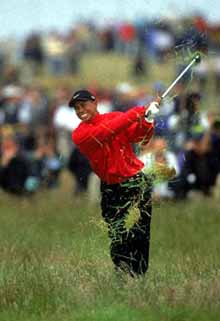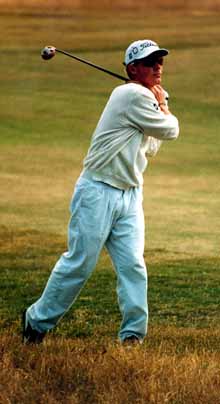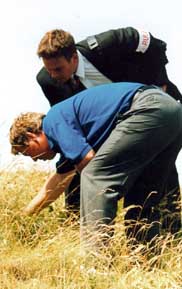Rough: What you should know
Here's a handful of tips you need to know when faced with the rough. You might get more than you bargained for.

In the latest in our series of ‘What you should know’ about playing golf, we tackle the rough, how to avoid it and how to play from it. Thick grass and hay usually flanks the fairways but can also be found surrounding tees and greens – it’s a place to be avoided if you want to keep your scores down.
The next tee was usually within a club-length of the hole.
Rough appears in many types and conditions. Most courses in the UK and Ireland are bordered by lush grass and hay with weeds allowed to grow wild, the deeper your ball travels off line the more difficult the lie – if indeed you can find it.
| |
Use your head Making best use of the 15th club in your bag – your brain – is often the best policy. Using an iron or lofted fairway metal from the tee will often provide the straightest tee shot when deep rough needs to be avoided.
Any professional golfer will tell you that the swing technique needs to alter slightly when you face a bad lie in the rough. Stand a little more upright at address to encourage a steeper take-away and sharper angle of attack into the ball.
Safety is always the best policy – no heroics. Pick out the nearest piece of ground with short grass – even if it’s behind you - and get the ball back into play. Again, take the heaviest club in your bag and chop down hard at the bottom of the ball. With luck it will pop out back into play. When in heather take your medicine – and pray!
It’s also a good idea when the ball is laying down in the grass to open the face (leading edge pointing slightly to the right at address for the right–hander) then re-grip and hold the club firmer.
| |
What’s semi-rough
The penalties around the green can be severe. While the green itself and the fringes are usually well manicured, greenkeepers tend to leave the rough trimmed but lush from the water sprinklers. Miss the green and the ball settles in deep, demanding a lot of imagination and creative shot-making.
The only difference is that it will pop out with little or no backspin and tend to bounce forward on landing. | |
Searching in rough Remember that you have five minutes, according to the Rules of Golf, to find your ball before you have to either replay another from the spot you first struck it or play the provisional ball you hit when you saw the original heading for trouble.
|















